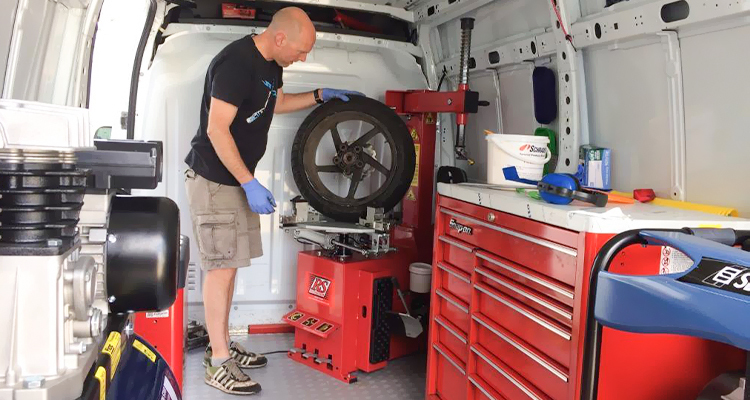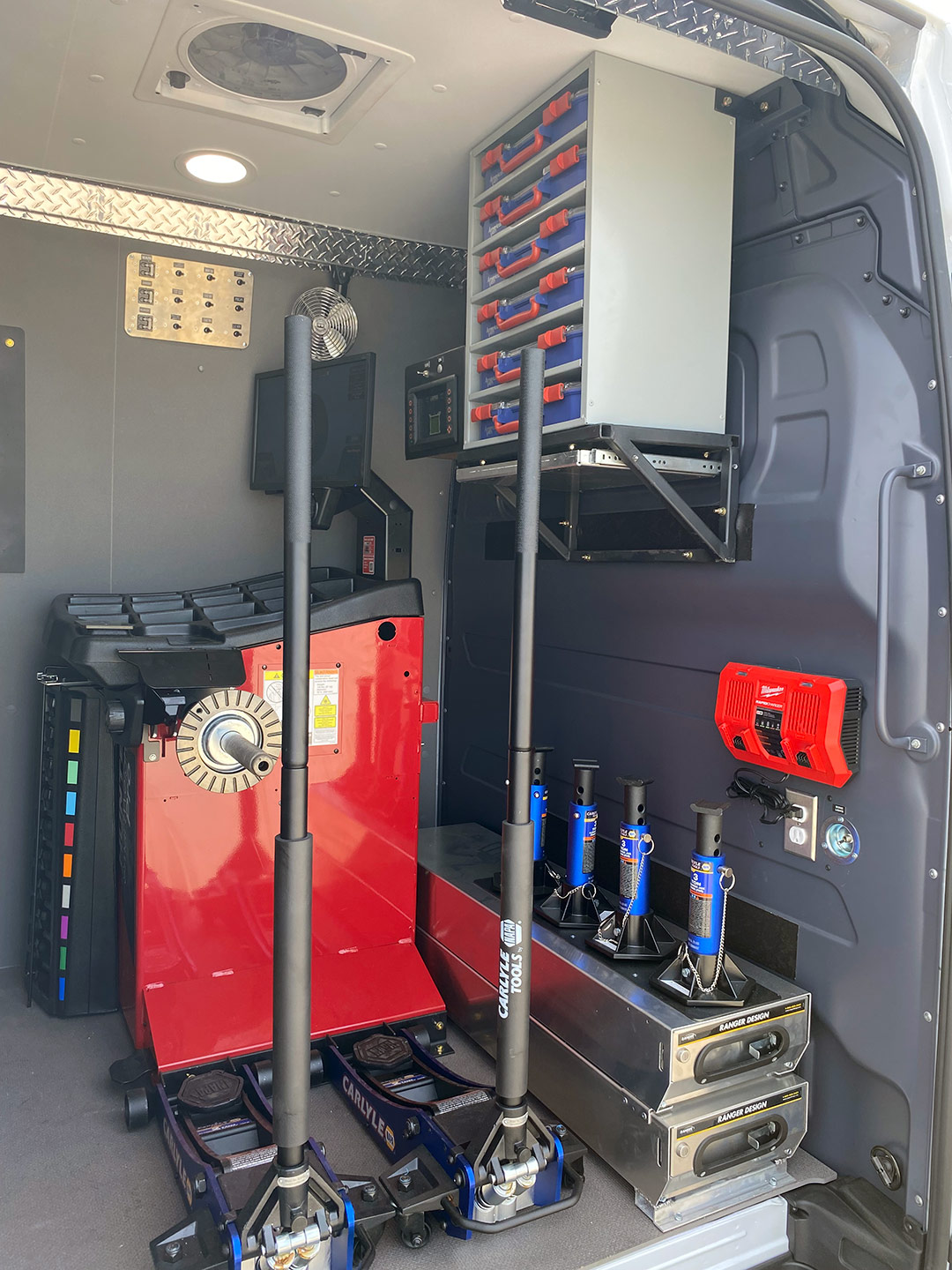Cost Effective Mobile Tire Replacement Las Vegas - Call Today!
Cost Effective Mobile Tire Replacement Las Vegas - Call Today!
Blog Article
Tire Service: Proven Approaches for Ideal Tire Maintenance and Care
Maintaining optimal tire condition is critical for both safety and security and efficiency of any type of automobile. From ensuring correct tire stress to normal turning and placement, there are tried and tested approaches that can substantially prolong the life expectancy of your tires and improve total driving experience. As we explore the details of tire care and upkeep, we will certainly reveal necessary standards that every vehicle proprietor need to follow for the very best possible outcomes. Let's look into the world of tire solution and find the tricks to maintaining your tires in excellent shape for the long run.
Importance of Tire Stress
Proper tire pressure is an important consider making certain optimal vehicle performance and safety when traveling. Maintaining the advised tire stress degrees given by the producer offers numerous advantages. To start with, adequate tire stress promotes much better fuel performance, as under-inflated tires can bring about enhanced rolling resistance, creating the engine to work more challenging and consume even more gas. Correct tire stress ensures also step wear, improving tire longevity and conserving cash in the lengthy run by delaying the demand for premature substitutes. Furthermore, properly pumped up tires add to boosted handling and stopping abilities, essential for risk-free driving in different road conditions. Over-inflated tires, on the other hand, can cause reduced grip and a harsher experience. Conversely, under-inflated tires are prone to overheating, which can lead to crashes and blowouts. Consistently changing and examining tire pressure, particularly soon trips, is an easy yet efficient way to improve lorry efficiency, extend tire lifespan, and prioritize safety and security on the road.
Tire Turning Standards
When taking into consideration tire rotation standards, it is vital to recognize the value of this maintenance task in taking full advantage of tire life-span and preserving ideal car performance. Tire turning includes altering the placement of each tire on a car to ensure also walk wear. Front tires tend to put on quicker than back tires due to guiding forces, making regular rotation essential for well balanced wear patterns. The suggested turning pattern varies relying on whether a vehicle is front-wheel, rear-wheel, all-wheel, or 4x4. Normally, tires must be revolved every 5,000 to 7,500 miles, or as advised in the automobile guidebook. Ignoring tire turning can result in irregular wear, affecting handling, traction, and potentially compromising lorry security. By sticking to proper rotation guidelines, vehicle drivers can prolong the life of their tires, boost fuel efficiency, and improve general driving experience. Normal rotation is an easy yet reliable maintenance technique that contributes considerably to tire durability and lorry efficiency.

Benefits of Wheel Alignment
Making sure correct wheel positioning after tire turning is crucial for preserving balanced wear patterns and making the most of automobile performance. Wheel alignment refers to the modification of the angles of the wheels to the supplier's requirements. One of the key benefits of wheel placement is boosted steering and handling response. When the wheels are appropriately aligned, it decreases guiding initiative, making certain a smoother and much more regulated driving experience. In addition, appropriate wheel positioning aids to prolong the life-span of your tires. Misaligned wheels can trigger uneven tire wear, bring about early tire replacement and increased upkeep prices.

Tire Footstep Depth Inspect
Carrying out a regular inspection of tire tread depth is important for preserving safe driving conditions and extending the life expectancy of your tires. The walk on your tires plays a crucial duty in providing traction, particularly in slippery or wet problems. To examine your tire walk deepness, you can utilize a tread depth scale or the penny test. The advised step deepness goes to the very least 2/32 of an inch. If the tread deepness is listed below this threshold, it is time to change your tires to guarantee ideal efficiency and safety and security when driving. Uneven step wear can suggest problems with tire suspension, alignment, or pressure, highlighting the value of routine walk deepness checks. Overlooking to keep track of and maintain proper walk depth can cause minimized grip, longer stopping distances, and an enhanced risk of hydroplaning. By including tire step deepness look into your regular upkeep routine, you can drive with confidence knowing that your tires are in leading condition.
Seasonal Tire Evaluation
An extensive analysis of tire problem customized to particular weather condition conditions is essential for preserving optimum efficiency and security throughout the year. Seasonal tire assessment is a basic facet of tire upkeep that makes sure tires are useful link prepared to face the obstacles posed by various climate condition. To prepare for winter season, it is necessary to check the tire stress frequently as cool temperature levels can trigger tire stress to drop. Examining tire walk depth is also essential to make certain adequate grip on snow and ice-covered roadways. In addition, checking for signs of wear and tear, such as lumps or fractures, can help stop potential tire failings. As the periods modification, it is very important to analyze tire condition and make any necessary adjustments to ensure risk-free driving. By performing routine seasonal tire assessments, motorists can extend tire lifespan, improve gas performance, and most importantly, make certain a safe driving experience in differing climate condition - Flat Tire Repair Las Vegas.
Conclusion
Finally, preserving proper tire stress, rotating tires consistently, lining up wheels correctly, keeping track of step depth, and conducting seasonal assessments are crucial methods for optimum tire care. By following these shown methods, chauffeurs can ensure their tires last much longer, perform far better, and contribute to general automobile security. It is very important to see this website prioritize tire upkeep to stop mishaps, enhance fuel efficiency, and lengthen the life-span of tires.
Sufficient tire stress advertises far better fuel efficiency, as under-inflated tires can lead to increased rolling resistance, creating the engine to function tougher and take in even more gas.When thinking about tire turning standards, it is necessary to comprehend the importance of this upkeep task in making best use of tire life expectancy and maintaining optimum automobile performance. Seasonal tire examination is a fundamental element of tire upkeep that guarantees tires are all set to face the difficulties postured by different weather condition conditions. By performing routine seasonal tire evaluations, motorists can lengthen tire lifespan, enhance gas performance, and most notably, ensure a protected driving experience in differing weather condition conditions.
In final thought, keeping appropriate tire stress, rotating tires frequently, lining up wheels appropriately, monitoring tread deepness, and conducting seasonal inspections are important practices for ideal tire treatment.
Report this page